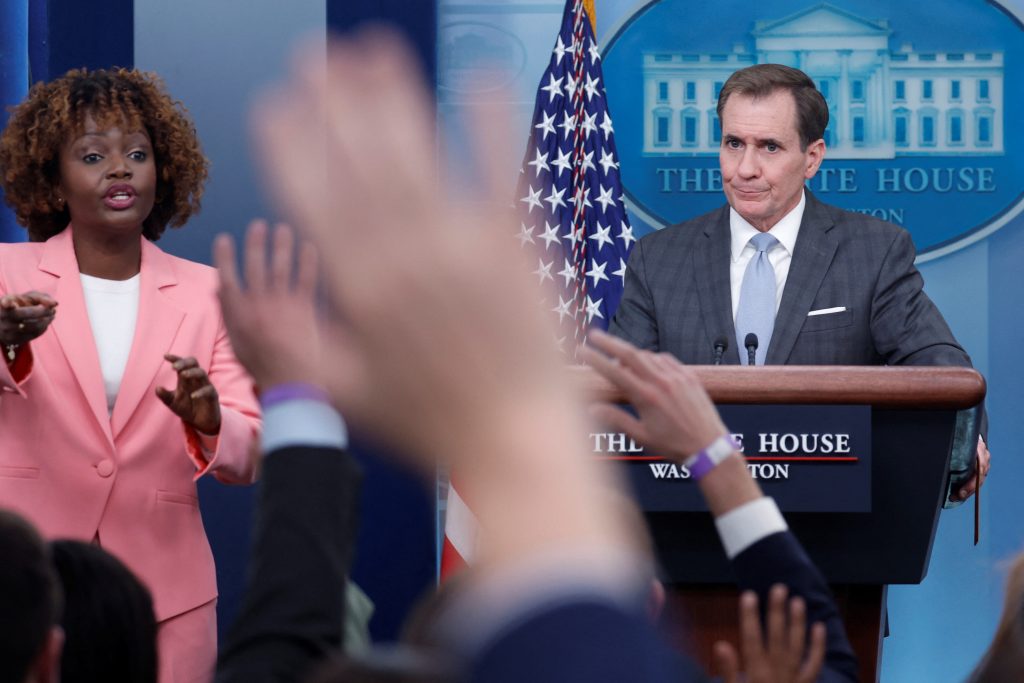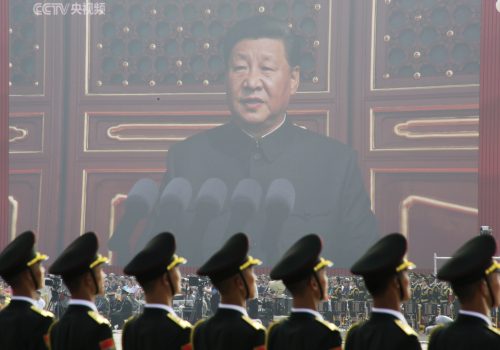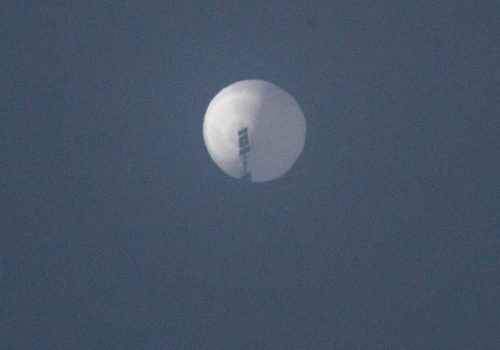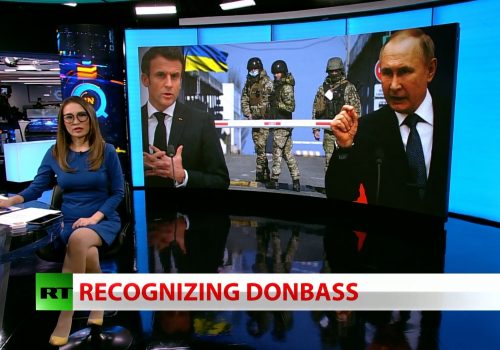Citizens are understandably concerned about the recent downing of a Chinese spy balloon and three other unidentified objects traveling over North American airspace. For countries in North America, long protected by the Atlantic and Pacific oceans, the thought—let alone an actual instance—of a foreign incursion is jarring. It is just not a part of our history. However, three things are even more concerning: the lack of US government clarity on what is happening, the possible threat to North America in the medium to long term from China or other actors, and how the reactions to these objects say more about “us” than “them.”
What is going on?
Conspiracy theories are a part of the human condition. We fill in gaps of knowledge with stories, suspicions, and fears to create a whole understanding of what is happening around us. The government’s delayed notification to the American public early this month about a large balloon, in some instances visible to the naked eye, and the lack of urgency to remove it from US airspace naturally led knowledgeable and unknowledgeable people to fill in the gaps. Perhaps the balloon was for weather observation (as the Chinese government proclaimed) or to collect signals intelligence or to collect imagery intelligence or just a test to see if the United States would identify its presence. All those theories were bandied about, but no one really knew—and US government spokespeople and leaders were unable or unwilling to provide clarity in a timely manner.
The shootdown of three additional flying objects only adds to the growing hysteria, especially since the US government is providing even less information. A basic tenet of the communications profession is to provide information in a timely and accurate manner and to answer questions honestly and as thoroughly as possible. Key US spokespeople’s answers to reasonable questions from journalists have lacked transparency, detail, and timeliness.
Those spokespeople have yet to address concerns about why these objects are suddenly being observed all of a sudden, outside of generic descriptions of turning up the sensitivity of radar systems. And they failed in their responsibility by not immediately and fully discrediting the notion that the three additional flying objects are UFOs made by alien life—allowing the belief to take flight among the public. For spokespeople not to emphasize a far more likely scenario of a foreign or commercial source for these objects is also telling and should be a concern. “What is going on here?” is a valid question and one the US government is obligated to answer.
What’s the threat?
The reality is that every single one of us is tracked as we make our way through daily life. Our mobile phones track our location and digital activities. Our vehicles send back a wide range of information to car manufacturers, including location and maintenance information. Closed-circuit television cameras capture our activities outside of the home. And yes, foreign countries have satellites above our heads that collect imagery, signals, and weather data, among other information. To be fair, the United States collects a vast amount of information on foreigners—far more than can ever be effectively used or analyzed—and it is something that those of us from the intelligence community (as I did during my time in government) use to inform policymakers on potential happenings abroad.
The balloon and three other objects feel different because they are different. Rather than unobtrusive collection that we can neither see nor easily conceptualize, balloons or large drones are something that we can envision over our local areas. We can see and feel the threat. The slow response by US and Canadian officials makes the public question their competence and commitment to keeping the homeland safe. If the balloon was able to go from China to the Montana area, linger for days, and then make its way to the Carolinas, what else is going on? The public is owed an explanation.
In the interim, the additional collection of information about US military facilities, US and Canadian communications, and general imagery of the United States and Canada informs intelligence professionals in China and potentially other adversary countries. After all, if the three yet-to-be-identified flying objects were of a commercial nature, the company that owns them would likely have obtained proper clearances to fly their drone or other object from a regulator such as the US Federal Aviation Administration. One can reasonably deduce that a foreign power is involved.
Is this about us?
So why use a balloon or large drone over North America that was undoubtedly going to be discovered? Because it allows an adversary to see how the United States will respond. Will it sit back and ignore a potential threat? This would provide an adversary some additional avenues for data collection or attack during a time of conflict. Will it simply shoot the items down to remove the threat? That would signal the strength of the US air-defense system and allow adversaries to gauge the response time for military decision-making. The US government response has shown that there may be gaps in airspace defense and intra-government coordination, and a disconnect between how Americans view foreign aircraft overhead versus how Washington may view the encroachment.
It also provides an adversary with insights on how the public will emotionally and politically react. Will politicians on opposite sides bicker and quarrel instead of establishing new requirements for a military response? Will the US president or Canadian prime minister take the issue seriously and implement a severe response on the diplomatic front? We still don’t have the entirety of the story around the three additional flying objects like we do about the surveillance balloon. However, we do know that there was a segment of the population that jumped to irrational conclusions, including that aliens are walking among us. This could be a wonderful conspiracy theory for adversaries to foster in order to divide some segments of North American society against their government and fellow citizens. From an influence or information operations perspective, a simple balloon with likely simple collection capabilities can provide benefits for years to come.
Jennifer A. Counter is a nonresident senior fellow in the Scowcroft Center for Strategy and Security’s Forward Defense practice and a vice president at Orbis Operations, where she advises friendly foreign governments on national-security matters. She previously served in the US State Department and as a US Air Force intelligence officer.
Further reading
Tue, Feb 14, 2023
China’s balloon blunder shows the shortcomings of its national security apparatus
New Atlanticist By Mark Parker Young
The composition of China's security structures indicates that the military did not want to disrupt a major diplomatic moment and thought the balloon would be undetected.
Fri, Feb 3, 2023
Five questions (and expert answers) about the curious case of the Chinese spy balloon
New Atlanticist By
US fighter jets have shot down a suspected Chinese spy balloon, but the tensions linger in the world's most important bilateral relationship. Our experts float their takes.
Fri, Sep 30, 2022
How the US can focus its fight against foreign influence operations
Hybrid Conflict Project By Jennifer A. Counter
Understanding exactly what US adversaries plan to do in the information space is vital to building domestic defenses.
Image: White House National Security Council Strategic Communications Coordinator John Kirby joins Press Secretary Karine Jean-Pierre for the daily press briefing at the White House in Washington, U.S. February 10, 2023. REUTERS/Jonathan Ernst



